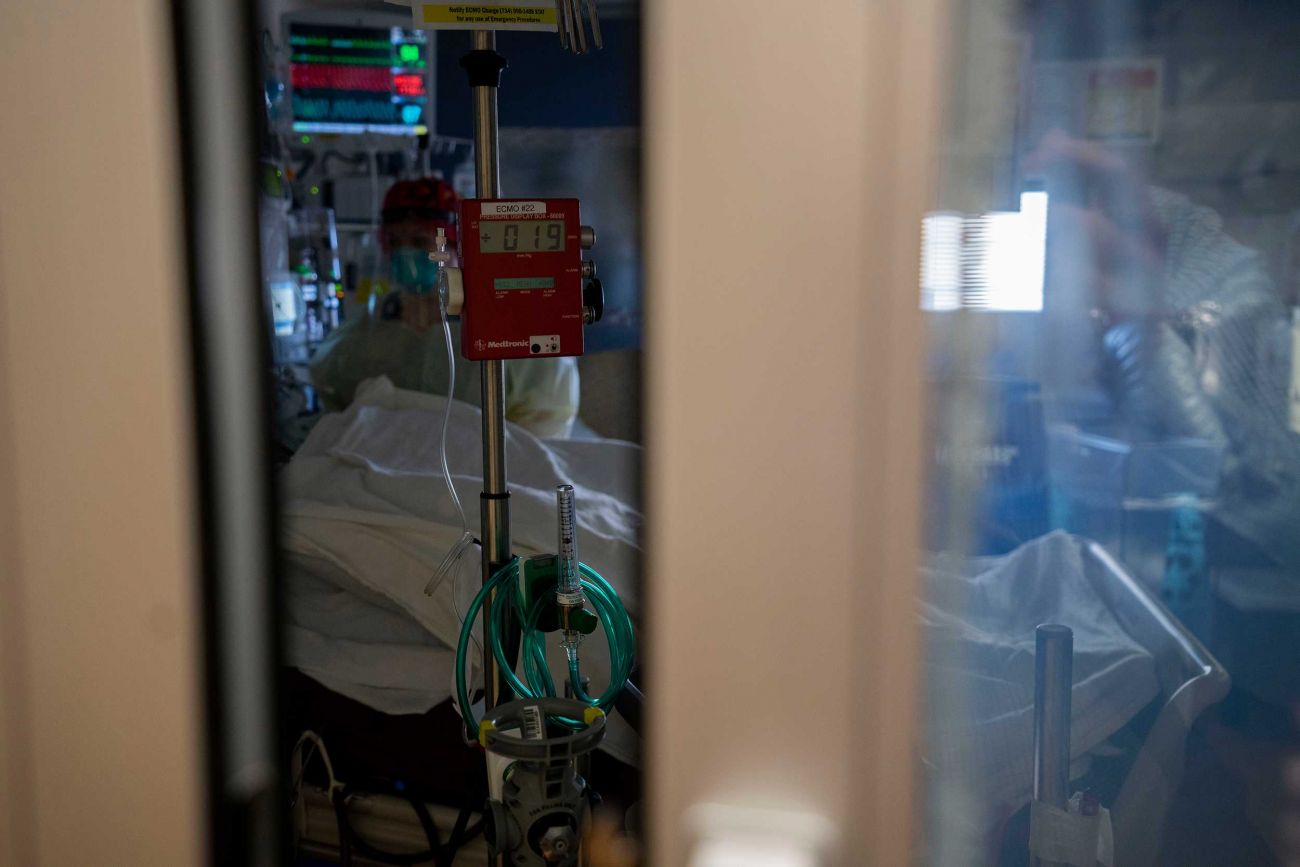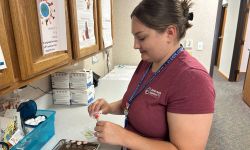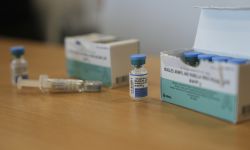These Michigan doctors treated coronavirus: Here’s what they learned

Dr. Matthew Sims has been leading what Beaumont Health calls “America’s largest serological testing study” of immunity responses to COVID-19. Dr. Teena Chopra is overseeing infection control at Detroit Medical Center, while Dr. Vineet Chopra is chief of hospital medicine at Michigan Medicine.
They are among many metro Detroit health care experts who’ve had a brutal crash course in COVID-19 over the last couple of months. We asked them what they have learned, which treatments they’re hopeful about, and what’s uniquely frustrating about this pandemic.
While many of their experiences overlap, what’s clear is that even now, no two health systems are treating this disease exactly the same way.
- The latest: Michigan coronavirus map, curve, chart, updated COVID-19 news
- Michigan’s latest stay-home order to allow landscaping, boating and golf
- What Gov. Gretchen Whitmer’s stay-at-home executive order means to Michigan
Lesson #1: COVID-19 is a shape-shifter
Just when you think you understand COVID, it changes.
“It's a very deceptive virus; to keep up with it, it is a challenge,” said Dr. Teena Chopra, corporate medical director for Hospital Epidemiology and Infection Control at Detroit Medical Center and a Wayne State University professor. “And particularly, it is manifesting differently by age, by race, by sex. Very early on, we were able to understand that, particularly in the city of Detroit.”
One set of her COVID patients, especially the younger ones, are developing pulmonary embolisms – blood clots that get stuck in the lungs and can be deadly. “They are manifesting as sudden onset shortness of breath,” Chopra said. “And some of them are showing higher mortalities than others.”
Many COVID patients “are very prone to developing blood clots,” said Heidi Pillen, director of Pharmacy for Medication Use Policy for Beaumont Health. “I don't think we had any suspicion that that was the case early on.”
No one’s sure why blood clots are proving so common in coronavirus patients.
One theory is that COVID might actually alter the structure of the lungs or the behavior of arteries. Others point out that infections often precede strokes, because the body makes more white blood cells (including the components that can lead to clotting) in an attempt to fight the virus. But the frequency of clotting could also help explain why some otherwise healthy patients are dying.
Meanwhile, patients coming from nursing homes (a big part of DMC’s patient population) may not even appear to have COVID during a first examination, Chopra said. They may not have a fever or chills.
“These older patients do not have the same symptoms,” she said. “They don't mount up the same immune response.”
Yet many of them are testing positive for the virus. “We are beginning to test every patient coming from a nursing home, whether they have symptoms or not, because we want to assume they have it.”
Stories from the front
Bridge Magazine, the Detroit Free Press and Michigan Radio are teaming up to report on Michigan hospitals during the coronavirus pandemic. We will be sharing accounts of the challenges doctors, nurses and other hospital personnel face as they work to treat patients and save lives.
If you work in a Michigan hospital, we would love to hear from you. You can contact Robin Erb rerb@bridgemi.comat Bridge, Kristen Jordan Shamus kshamus@freepress.com at the Free Press and Kate Wells katwells@umich.edu at Michigan Radio
Lesson #2: Ventilators may not be the lifesavers we thought
At the start of the pandemic, Dr. Vineet Chopra, Michigan Medicine’s Chief of Hospital Medicine, thought one thing seemed clear: Getting patients on ventilators as early as possible gave them a better shot at survival.
“I think the biggest thing I've learned is, that may not be true,” he said.
Recent data suggest patients who are put on ventilators may be more likely to die than those who aren’t. And there have always been risks to ventilation. The machines can damage patients’ lungs and increase the risk of infection.
There can also be dangerous side effects to the heavy sedation required. COVID patients especially are requiring unusually large doses of medication to manage their pain and keep them sedated. That’s because they require such high levels of oxygen for longer periods of time, Pillen said. At Beaumont, they’re seeing coronavirus patients need two to three times the amount of medication normally needed for ventilation.
Lesson #3: Some patients will get “stuck” on vents and need permanent help
Doctors across the board say many of their COVID patients still in ICUs have been on ventilators for weeks on end, and aren’t showing signs of improvement.
Sometimes nicknamed “slovid” cases, Teena Chopra said she’s noticed this particularly with patients who have “high viral loads to begin with,” and underlying issues like obesity, diabetes and hypertension.
“It is hard to take them off the vent, and we are reaching the stage when we have to now give them some more comfort and do a tracheostomy on them,” she said. That’s when a breathing tube is inserted into a patient’s windpipe through an incision in the neck. The hope is it’ll allow patients to get oxygen longer term, without the risks or sedatives involved in a ventilator.
It’s “so they can be a little bit more comfortable,” Teena Chopra said. “Because they've been on ventilators for, let's say, 30 days, 25 days.”
Still, this isn’t what Dr. Steve Kalkanis, CEO of Henry Ford Medical Group, could have predicted.
“That's not something we thought would have been appropriate or possible at the beginning of this crisis,” he said. “But because they're stable from other medical standpoints, it's really just their lungs, we have started to do [tracheostomies on] some of these patients.”
Still, those patients will still need medical assistance going forward, especially older people.
“A lot of these patients are also nursing home patients,” Teena Chopra said. “And then downstream, there are other effects and other problems that we have to face, which include discharging these patients for long-term care facilities. What are the implications of that? How contagious are these patients?”

Lesson #4: Some patients will surprise you for the better
Michigan Medicine’s Vineet Chopra is now trying to keep patients off ventilators as much as possible — or at least, delay the move. And he’s been surprised by how well some patients are doing with a less-risky treatment: a high-flow nasal canula, also known as high-flow oxygen therapy. It’s basically a big, thick tube that pushes a lot of warm oxygen into your nose.
“It's surprising to me how I've seen younger patients, who would have met criteria for being on a ventilator, getting this high-flow oxygen therapy, literally sit there with their devices, texting their loved ones with their (oxygen) numbers looking terrible, but they're feeling OK,” he said.
And even in some patients where he’s been sure they’ll inevitably wind up on a ventilator, he’s been proven wrong.
“I don't know if it's the resilience of the human body, but it's this incredible ability to tolerate low levels of oxygen that otherwise, you know, you would say in your old ways, is not compatible with life. But with COVID, it seems like it actually works.”
Lesson #5: Not all doctors are keen on the same treatments
Without proven treatments and no known cure, every health care system has stitched together a different cocktail of procedures and medications.
Hydroxychloroquine, for example, has mixed reviews. The FDA recently put out a warning about the controversial drug that got so much attention from President Trump, saying it’s linked to “reports of serious heart rhythm problems in patients with COVID…”
But Henry Ford Health System is continuing a large clinical trial with 3,000 health care workers and first responders to see if taking the drug can prevent them from getting COVID.
And Detroit Medical Center is still using it too, said Teena Chopra, though it’s closely monitoring the patients who get it.
“We haven't seen any harm,” she said. “And we've been able to take patients, use this, and delay the need for ventilation in some category of our patients.”
Beaumont Health, meanwhile, is removing the drug from its treatment guidelines. And at Michigan Medicine, Vineet Chopra said it seemed to cause nausea and vomiting for people who were already struggling to breathe.
“And I remember it kind of getting a lot of folks very angry about it” [when Michigan Medicine said it would stop using the drug].‘What do you have to lose? This is sort of a no-brainer. Just give it to people.’ And it wasn't a no- brainer because the harms were real. We saw liver toxicities. We saw the electrical toxicities to the heart.”
Lesson #6: There are signs of hope
There are some treatments Vineet Chopra said he feels cautiously optimistic about — chiefly, interleukin 6, which can block or minimize damage from inflammation. Clinical trials are still ongoing, but he said anecdotally, it’s been promising.
“There've been patients where I have just been confident that in 48 hours we're going to end up putting them on a ventilator,” he said.
“And then, 48 hours later, not only are they dropping their oxygen requirements, they’re clinically looking better. Their fevers go away … they start to stabilize in terms of their overall sense of weakness, fatigue, myalgia (muscle aches) and literally are leaving the ICU…. So these are drugs, I think, that haven't caught a lot of the attention of the public yet. I'm not sure why that is.”
Meanwhile, Henry Ford has started giving convalescent plasma transfusions to about 20 patients. Taken from a donor who’s recovered from COVID-19, the treatment may help sick patients fight off the virus.
“In a few patients now, we've literally tried everything,” Dr. Kalkanis said.
“We've tried the one drug regimen, we've tried multiple drugs, we've tried permutations of drugs. We've tried the proning (changing the patient’s body position). And it wasn't until we started doing the convalescent plasma transfusions where we saw this turnaround.
“And the turnaround itself was dramatic. It was within a few days of them being put on a ventilator, saying their goodbyes, to actually being home, breathing on their own, looking like nothing happened to them. So I'm very optimistic.”
Still, without clear results from clinical trials, everything health care workers are trying right now is trial and error. And that’s naturally frustrating, Kalkanis said.
“I think physicians are extremely, by nature, data driven. And so we've had so many experiences over the last seven weeks during this challenge, where we've used the available data, we've been in constant communication … with the CDC … and we make a decision.
“And then 24 hours later, there's a new data point and we have to reconvene the team.... And that's why I think in the end, this concept of teamwork and communication is going to matter most. Because we just don't have all the answers.”
One answer they’re hoping to have soon: a better understanding of whether the antibodies from COVID offer immunity.
“We don't have the answer to that,” Dr. Matthew Sims of Beaumont said.
“I wish I did. Everybody is asking you that. But … as soon as the statisticians say that data [from our study] is strong enough to make a decision that there is protection, or that there is not protection, we're going to get it out there.
“And, you know, that could be in three weeks or four weeks or five weeks or 10 weeks or, I don't know. I wish I knew. But we're going to do it as fast as absolutely possible.”
RESOURCES:
- Hey, Michigan, here’s how to make a face mask to fight coronavirus
- Michigan coronavirus dashboard: cases, deaths and maps
- Michigan families can get food, cash, internet during coronavirus crisis
- How to give blood in Michigan during the coronavirus crisis
- 10 ways you can help Michigan hospital workers right now
- Michigan coronavirus Q&A: Reader questions answered
- How to apply for Michigan unemployment benefits amid coronavirus crisis
See what new members are saying about why they donated to Bridge Michigan:
- “In order for this information to be accurate and unbiased it must be underwritten by its readers, not by special interests.” - Larry S.
- “Not many other media sources report on the topics Bridge does.” - Susan B.
- “Your journalism is outstanding and rare these days.” - Mark S.
If you want to ensure the future of nonpartisan, nonprofit Michigan journalism, please become a member today. You, too, will be asked why you donated and maybe we'll feature your quote next time!








